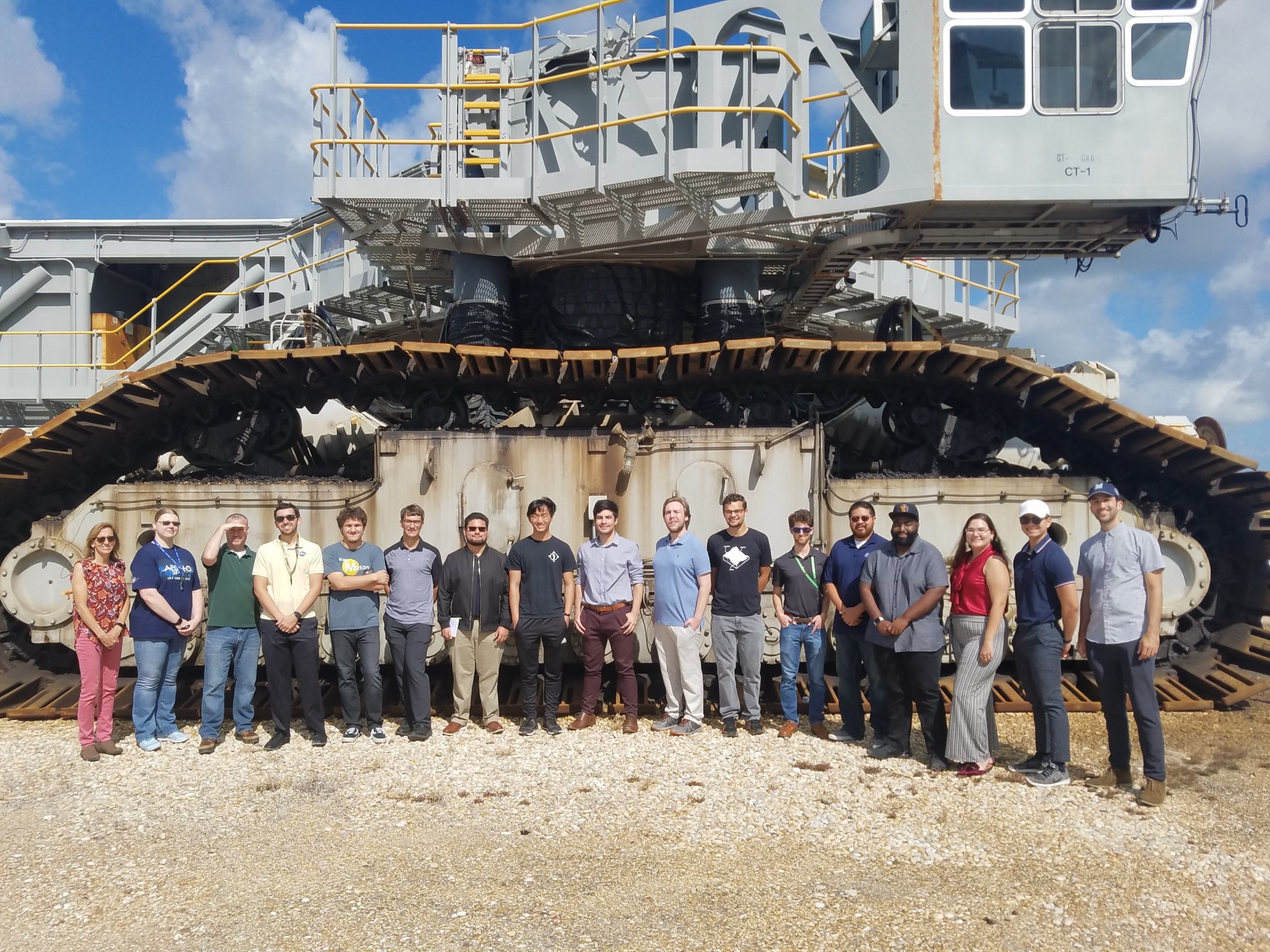By Danielle Sempsrott
NASA’s Kennedy Space Center
Developing models to determine the mass of regolith mined by robots on the Moon. Researching control methods to apply to future launch vehicles. Improving software development and system lifecycles for monitoring rocket performance. These are just a few of the projects that interns at NASA’s Kennedy Space Center in Florida will work on this year.
Through the agency’s OSTEM (Office of STEm Engagement) internship program, college students directly contribute to NASA’s mission, bringing new and fresh ideas to the table while gaining valuable workplace knowledge and experience.
“The students are so eager to get involved in NASA and space exploration,” said Kathleen Wilcox, OSTEM internship coordinator at Kennedy. “This gives them an opportunity to use some of their creativity, skills, and ideas, and it really lights a fire of excitement and energy for both the students and the people they work with.”
NASA offers 10- and 16-week project-based internships during the spring, summer, and fall semesters. But these internships aren’t exclusively in the science, technology, engineering, and mathematics (STEM) fields; they can touch on a wide range of disciplines, from journalism to accounting and more.
Kennedy’s OSTEM office takes care to select projects that align with NASA’s mission but also benefit the intern. Once an internship opportunity is posted online, mentors interview applicants and select the students they believe are the best fit for their project.
“It’s a good feeling to think that you’re helping these students,” said Jill Giles, mentor and computer science intern lead for Engineering’s Exploration Systems and Operations division at Kennedy. “I feel like I’ve been in the field long enough that when they come to me, I can help them make career choices. And to me, that’s a big reward.”
Typically, there are about 70 interns working at Kennedy in the summer, and around 30 to 40 in the spring and fall.
Peyton McDonald is a junior at Alabama A&M University studying electrical engineering with a concentration in nuclear power. Her internship will center on computer software engineering – something she doesn’t have a great deal of background in but that she is more than willing, and excited, to learn.
“To know that what I’m doing is going to help the Artemis program – help their simulations determine whether a rocket is working properly or if the astronauts will be safe while they’re going to the Moon – and that my portion of the internship is an important contributing factor to that is just really exciting,” she said.
Also interning at Kennedy this year is Nashir Janmohamed. He graduated from the University of California, Los Angeles, with a degree in jazz studies and plans to enroll at the University of Central Florida to study computer science.
“I think a lot of people hesitate to take an internship because they don’t want to set off their timeline for school, but it’s such a crucial part of your learning,” he said. “And I think it gives a lot of students, myself included, the confidence that maybe they could one day work for NASA.”
This semester will mark his third consecutive internship at Kennedy and his fifth overall at the Florida spaceport. During his time at Kennedy, he has contributed to a variety of projects, ranging from software development to conducting research and working on actual hardware. His advice to those interested in applying but worried they don’t have the right technical background or expertise: “Just go for it.”
“You will surprise yourself if you work hard. I think we always doubt ourselves the most, but if you’re willing to put in the work, you can do a lot more than you think,” he said. “You never know what a mentor is looking for, and a NASA internship is a great way to grow.”
For more information on NASA’s OSTEM internship program, visit https://intern.nasa.gov.




























